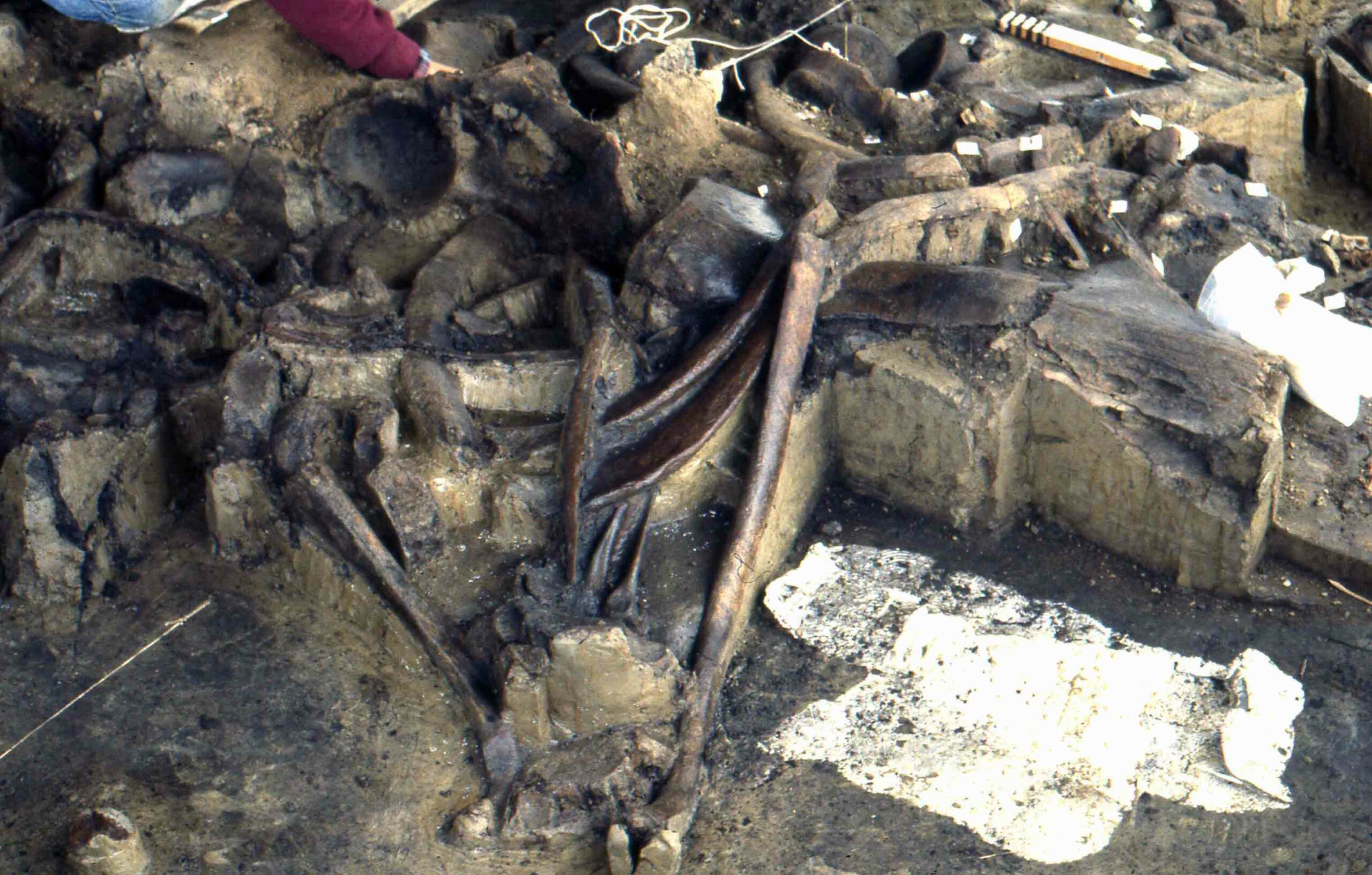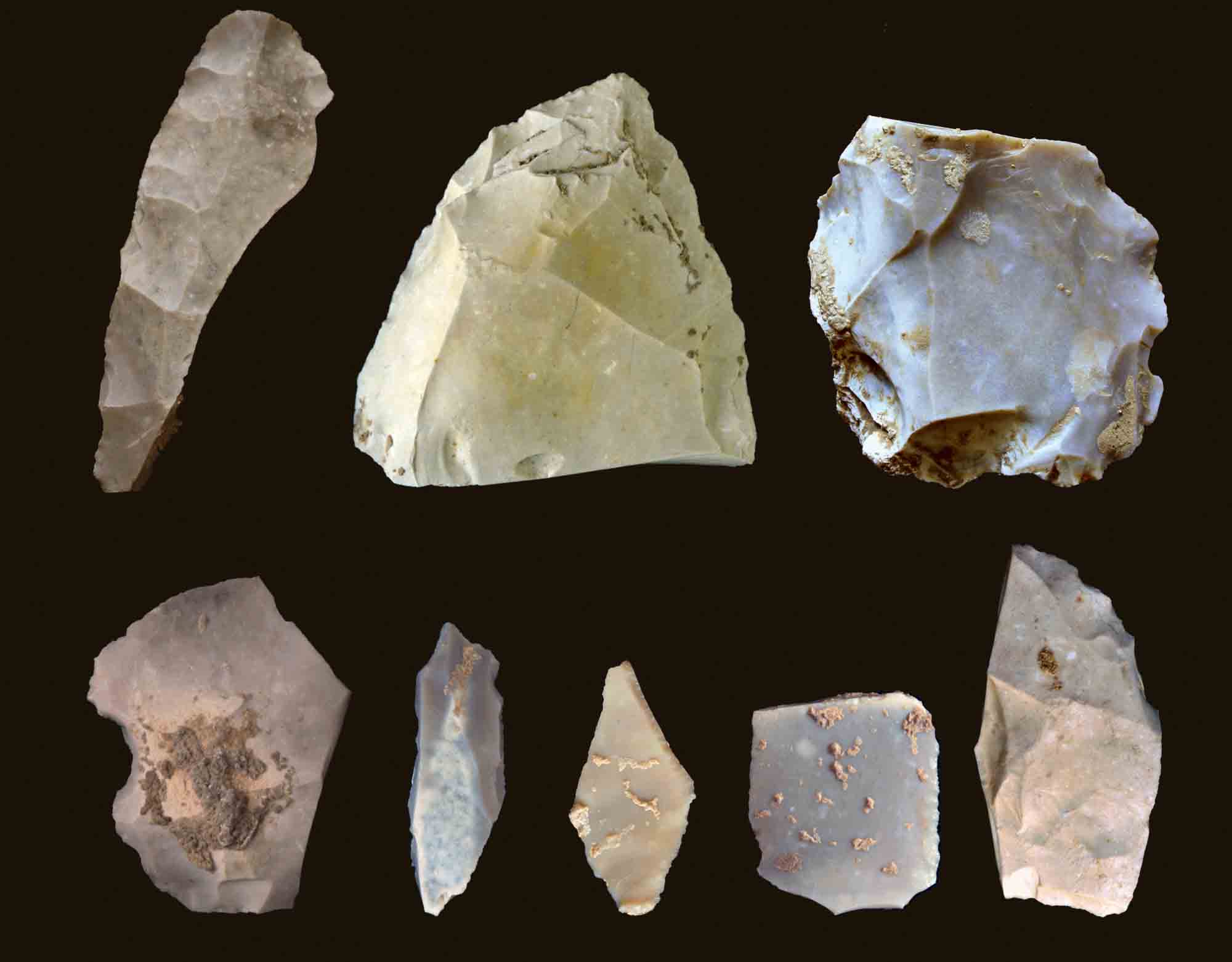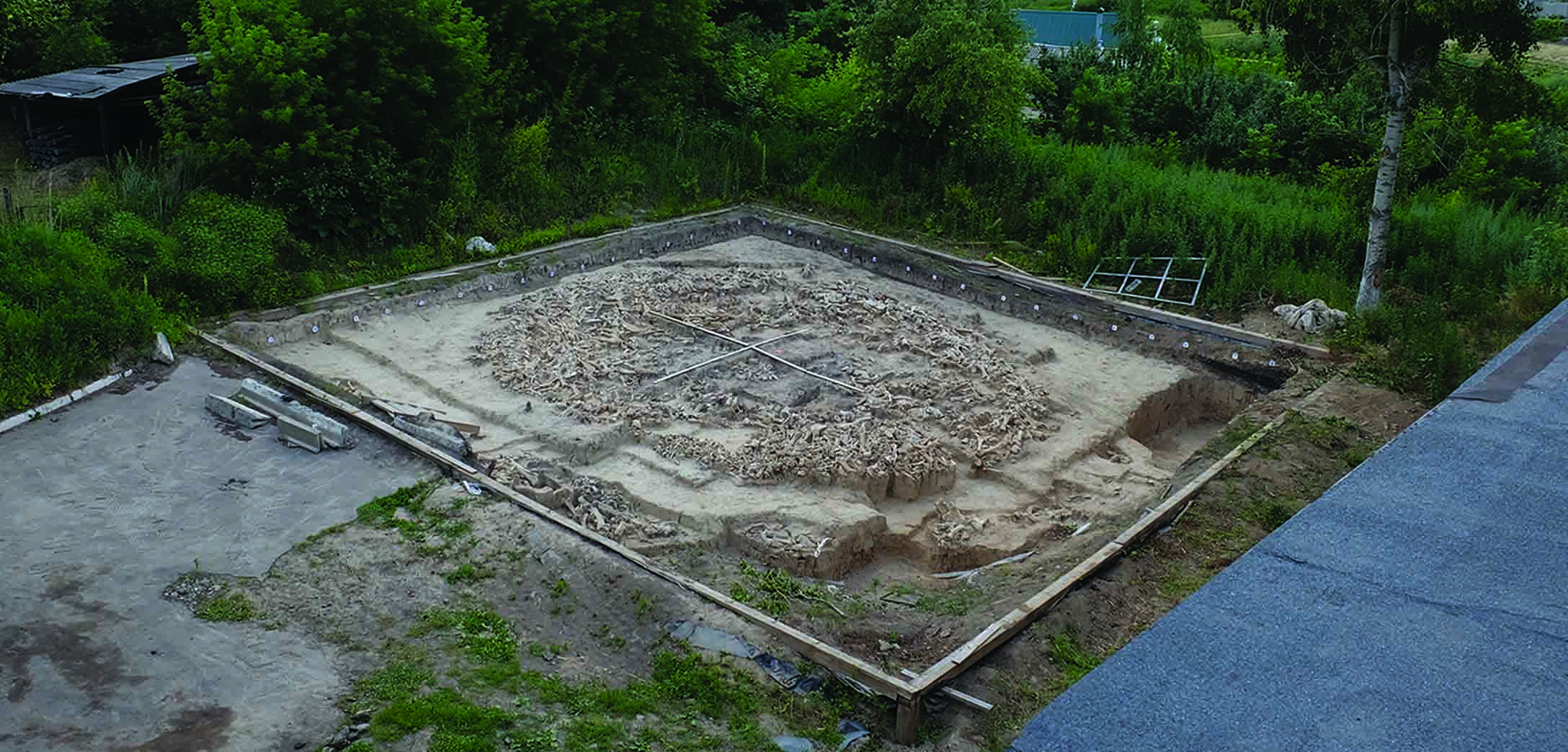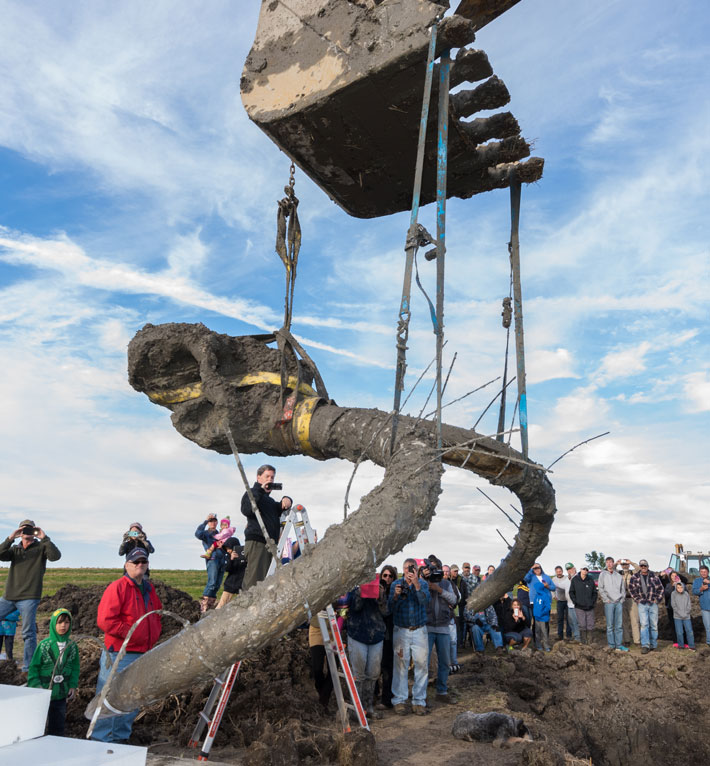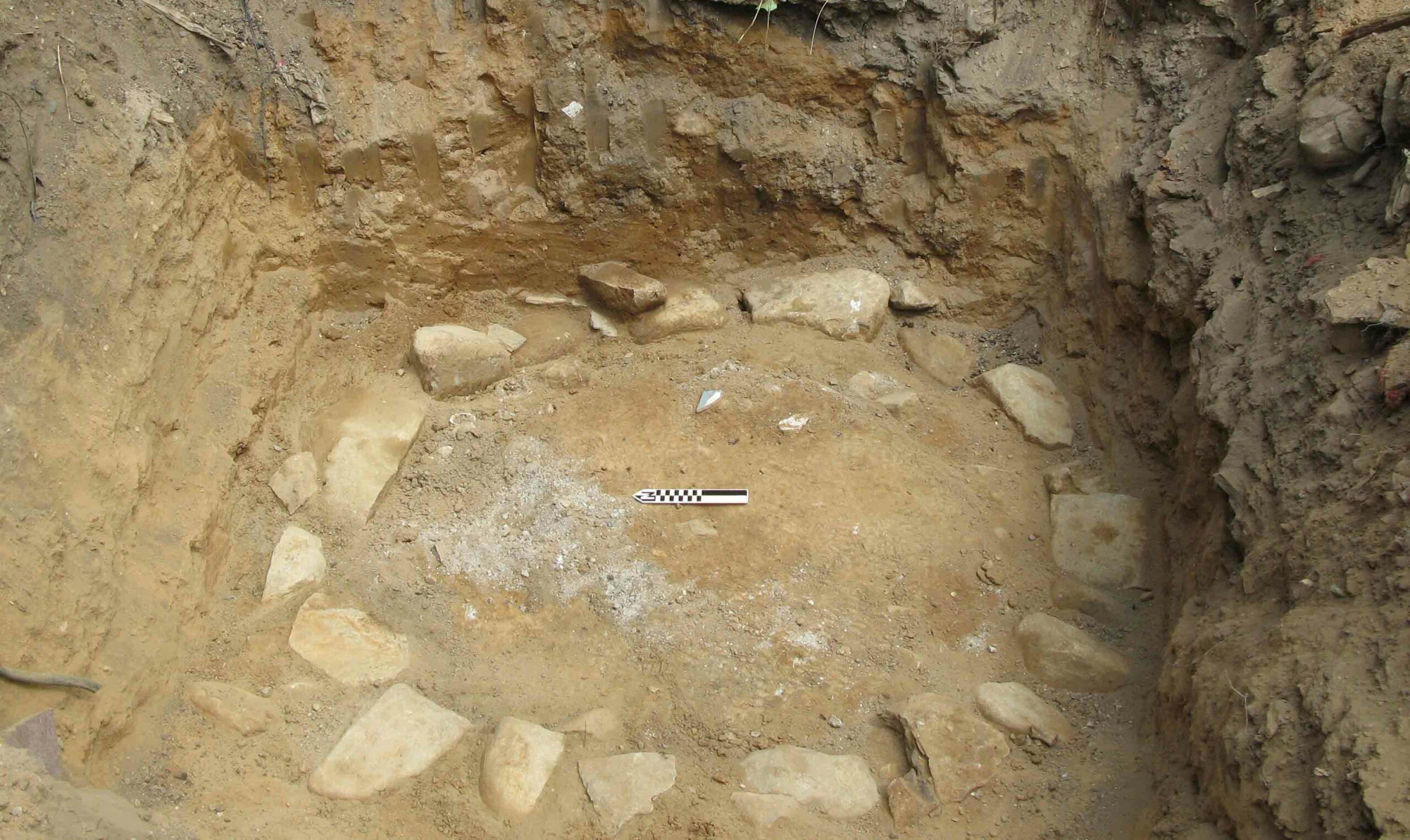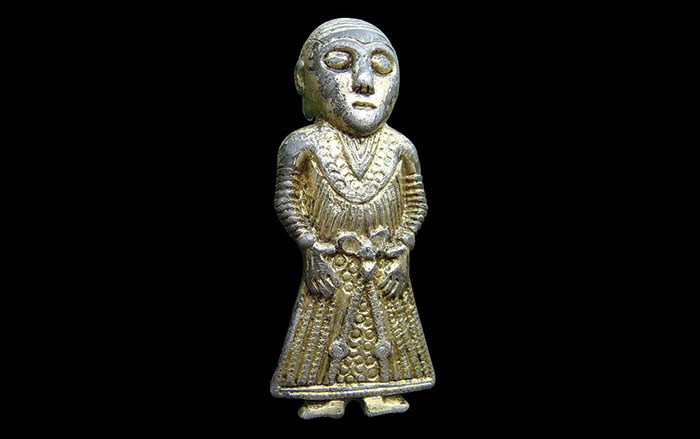
In 1964, while draining a marshy field on the Schaefer Farm, an hour north of Chicago, an earthmover jolted to a halt when it struck a buried mammoth femur, throwing its operator from his seat. The mammoth remains would end up in the nearby Kenosha Public Museum. More than 20 years later, an amateur archaeologist noticed cut marks on another set of mammoth bones in the museum’s collection, indicating they had been butchered. That prompted archaeologist Dan Joyce, the museum’s director, to reinvestigate the Schaefer site.
Beginning his excavations in 1992, he found, under two-and-a-half feet of ancient soils, roughly 80 percent of a completely butchered mammoth. Because the animal had been inundated by the waters of a long-dried-up lake shortly after it was butchered, its bones were well preserved. Many bore V-shaped cut marks typical of what would be made by humans using prehistoric tools. Joyce also found fragments of two stone blades with the remains. Preliminary dating says the bones are roughly 13,000 years old. “We had a Clovis date, so we thought we had a Clovis site,” Joyce says. But when the bones were redated the next year using a more sophisticated technique that purified the collagen protein in them, that assessment went out the window. The new dates came back clustered around 14,500 years ago.
If the analysis wasn’t enough to convince Joyce, what was found three-quarters of a mile away at the Hebior Farm confirmed it. There, in 1994, a team led by David Overstreet, an archaeologist at Marquette University in Milwaukee, found 90 percent of a similarly butchered mammoth, along with a more complete set of butchering tools. The bones from Hebior would be dated to 150 to 200 years before the Schaefer bones.
“Both Schaefer and Hebior are pre-Clovis, but they’re a Clovis subsistence style, so they’re almost bridging the gap,” says Joyce, referring to the Clovis people’s reputation as hunters of mammoths, bison, and other big game. “Are they more properly called ‘proto-Clovis,’ something that develops into Clovis?”


